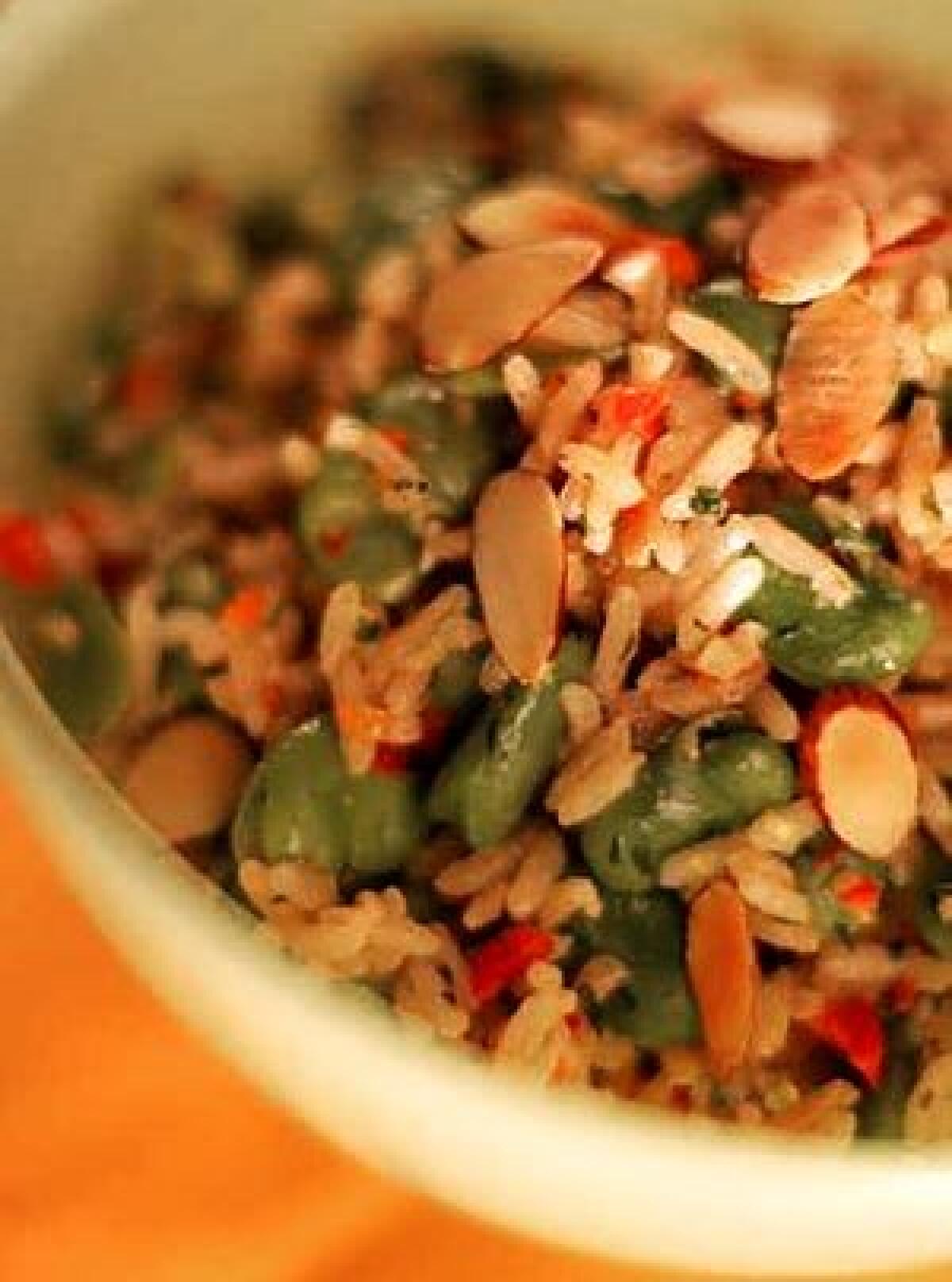Fines herbes: Spring’s zesty fab four

CONSIDERING France is the country that gave the world the expression ménage à trois, it’s probably not surprising that cooks there have defined ways to use herbs in multiples too. Three of these brilliant combinations will make cooking more enticing any day of the year, but one of them could not be better suited to this season: fines herbes.
Herbes de Provence, typically thyme, rosemary, lavender and bay leaves, are the essence of summertime cooking, meant for dishes with sunny aspects. Bouquet garni -- bay leaf, parsley and celery leaves with onion -- is meant for low and slow stewing, especially in fall and winter. But fines herbes have a particular lightness of being, a spring in their flavor.
The name (pronounced “feen ZERB”), sounds snooty enough to raise your pinkie, but the taste could not be more accessible. Roughly equal proportions of finely chopped, fresh tarragon, chives, chervil and parsley are mixed together to make a sprightly flash of green that goes with everything you want to cook right now. Any of those herbs would be a fine partner for, say, asparagus, but as a team the four are unbeatable.
Through the centuries the herbs probably have been used most ubiquitously in omelets and scrambled eggs, which are cooked in lots of butter so that the creaminess and richness carry the pungency of the almost licoricey blend of herbs through to every mouthful.
For the same reason, fines herbes are often mixed with top-quality butter to make a compound that can be chilled in a cylinder, sliced and melted over seafood, vegetables or meats. But there is no limit to the ways in which you can revel in four flavors in one.
Of all the components of fines herbes, parsley is the most pedestrian. If you sprinkled it over the truffles of spring -- morels -- you would probably wind up yawning. But the secret to this ménage lies in the mixing. Combine flat-leaf parsley with two herbs that have an undertone of licorice and a third with onion pungency, and the dullest leaves in the bunch suddenly have a super-herb role.
Parsley mellows the assertiveness of its partners in flavor while adding green intensity. (As always in cooking with parsley, the flat-leaf or Italian variety far outshines the curly kind, which has to have been bred for garnish only.)
The middle two elements, chervil and tarragon, are the yin and yang of licorice-scented herbs. Chervil is a little harder to find, and has much lacier leaves and more delicate flavor; tarragon is robust in taste and texture -- its leaves look like sturdy grass. Why they are teamed is a mystery lost to the Escoffier ages, but it does seem very French to mix and match subtlety and strength.
What brings the foursome into harmony is chives, with their whiff of onion. There’s a reason so many great dishes around the world begin with an aromatic member of the lily family. Chives stand up for themselves but also mellow out in a way green onions or shallots cannot.
Classically, fines herbes are made with equal parts of the four elements, but a more generous hand with chives seems to build a better balance of flavor.
Other herbs could be chopped into service, of course. You could add a little basil, sage, oregano or even lavender. Feel free -- the French may have come up with the concept, but they never wrote it in mortar stone; they have no hesitation about adding celery leaves, fennel or other herbs.
One advantage of the time-honored formula for fines herbes, though, is that every element is complementary to the ethereal aspects of produce in markets now.
The most classic ways to use fines herbes take you on a trip to France -- in a butter sauce for sautéed frog’s legs, for instance, or in the batter for crepes.
But they also slip more subtly into any recipe that calls for tarragon alone. Try them in green goddess dressing, and you get more nuance against the leaves in a salad.
Fines herbes are also transformative in tartar sauce by another name: ravigote. This classic is made many ways but is quickest, easiest and most irresistible if you start with mayonnaise from a jar. Capers and shallots enliven the sauce to accompany crispy fried fish (or shrimp).
Naturally, fines herbes are superb in vinaigrette, especially if you start with tarragon vinegar for a flavor boost. You can also make your own flavored vinegar or oil by steeping whole herbs (washed and dried well) in either liquid in a glass jar for a couple of weeks.
You could toss a green salad with the vinaigrette, but it’s even better on a mixture of rice with fava beans, fennel, diced red pepper and toasted almonds. (The same could also go into a more predictable pasta salad.)
Or you can blend them with crème fraîche to lighten and enrich a chilled asparagus soup. Or mix them into mashed potatoes or the base of a cheese soufflé. You can even add them to cream cheese for a bagel, with or without smoked salmon.
Except with most egg preparations, when the seasoning is incorporated from the first stroke of the whisk, fines herbes should be added to any dish just before you serve it. Heat beats the life out of flavor. Even four flavors playing together.
More to Read
Sign up for The Wild
We’ll help you find the best places to hike, bike and run, as well as the perfect silent spots for meditation and yoga.
You may occasionally receive promotional content from the Los Angeles Times.










